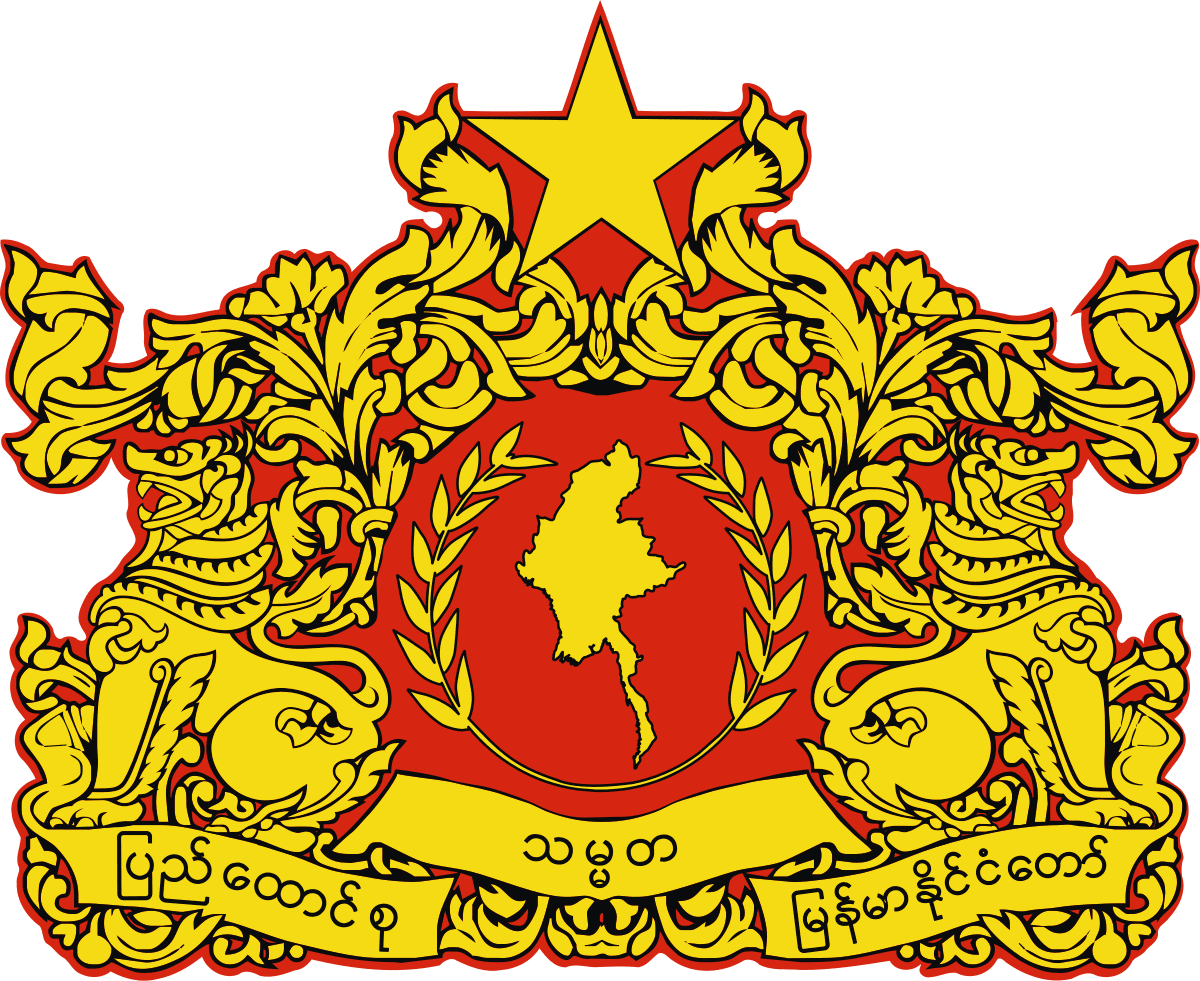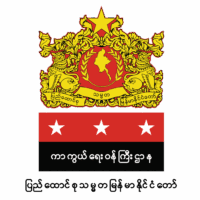Anniversary of the Establishment of People's Defence Force (PDF) - 2 Years Press Release
Anniversary of the Establishment of People’s Defence Force (PDF) – 2 Years
Press Release
5th May, 2023
1. On the 5th of May, 2023, the People Defence Force (PDF) commemorated its second year since its founding. The Ministry of Defence, with the approval of the public, created the PDF as a response to revolutionary demands and to engage in resistance warfare under the National Unity Government.
2. The Ministry wishes to extend its gratitude and appreciation to the public who provided support and cooperation in every possible manner, thereby enabling the founding and continuity of the People Defence Force (PDF).
3. Furthermore, the Ministry wishes to express its sincere appreciation and acknowledgement to all the allied ethnic revolutionary organizations for their invaluable support in the swift founding and continued operation of the PDF Army. Such assistance has taken various forms, including training, joint recruitment, enforcement, and aid.
4. The Ministry, on behalf of the people of Myanmar, wishes to convey our heartfelt appreciation to the members of the Central Command and Coordination Committee (C3C) and the Joint Coordination Committee (J2C), including their leaders and allied ethnic revolutionary organizations.
5. The People’s Defence Forces (PDF) acknowledge that public participation, support, assistance, and motivation are critical to their existence. The revolution is a product of the people’s will and involvement, and the PDF Army cannot operate without public support. The People’s Army, which originated from the masses, aims to safeguard and honor the people. Therefore, with the public’s involvement, the People’s Defence Forces will persevere and strive to put an end to military rule and establish a federal democratic union.
6. The Ministry of Defence, in conjunction with the People Defence Forces, has accomplished significant milestones over the past two years, some of which are highlighted below:
(a) Currently, there are approximately 300 battalions and columns of the People’s Defence Forces (PDF) spread throughout the country. Additionally, People’s Defence Organizations (PDOs/Pa-Ka-Fa), which function as People Militia, have been created and set up in over 250 townships. Over the past two years, our fighting forces have grown in numbers and strength, surpassing that of the enemy.
(b) The Central Command and Coordination Committee (C3C) and the Joint Coordination Committee (J2C) were established in partnership with allied ethnic revolutionary organizations. These committees oversee and negotiate military-level strategic planning, joint command, and coordination affairs.
(c) The Ministry of Defence has established the Military Headquarters of the People’s Defence Forces (PDF) in line with its policy. The PDF military headquarters works in conjunction with allied ethnic revolutionary organizations to oversee military operations.
(d) Currently, the PDF Army comprises three military commands known as the Northern military command, Southern military command, and Central military command. Furthermore, in collaboration with relevant allied ethnic revolutionary organizations, the No.1 Military Region and Southern Military Region have been established for the purpose of military coordination and joint command. The majority of district-level commander positions, battalion and column commander positions, under the command of the military regions and sub-military regions, are staffed with battled-hardened military leaders from allied ethnic revolutionary organizations.
(e) The People’s Defence Force (PDF) is currently engaged in Asymmetrical Warfare against a significantly more advanced enemy, with superior weapons, air power, technology, and military expertise. The PDF Army employs the “People’s War Strategy” as its military approach and systematically utilizes “Guerrilla Warfare” as its military tactics.
(f) Over the past two years, these military strategies have effectively weakened the enemy by causing them to become exhausted physically and mentally, and threatening their control. As a result, many areas have been brought under control in different parts of Myanmar. To establish public administration and social service mechanisms in these controlled areas, NUG ministries and departments are working closely with allied organizations.
(g) The “District Coordination Teams” were established to address local-level issues through coordinated efforts between the civilian and military sectors. These teams consist of the District Commander, District Military Staff/Quarter Officer, and the person in charge of the District People’s Defence Organization (PDO/Pa-Ka-Fa), who are responsible for the military aspect of coordination.
(h) The primary vulnerability of the People’s Defence Forces (PDF) is the inadequacy of arms and ammunition due to insufficient funding. When the People’s Revolution began two years ago, the enemy was resisted with only homemade guns and rifles (Tumi). However, through public donations and cooperation with allied ethnic revolutionary groups, PDF has received various small arms, motors, sniper rifles, small unmanned aerial vehicles (Drones), and various mines, including assault rifles, to some extent. Additionally, our successful manufacturing process of arms and ammunition has been very fruitful. Nevertheless, we must continue to strive to attain a level of weapon and ammunition armament that can lead us to the match-winning level, comparable to that of the enemy. The ministry is making continuous efforts to obtain adequate strategic weapons to counter and resist air attacks, which are the enemy’s primary advantage.
(i) Various types of trainings have been organized and conducted for PDF warriors and officers at different levels in collaboration with allied ethnic revolutionary organizations. These trainings include basic military training, non-commissioned officers (NCO) training, junior commander training, military staff/adjutant/quarter officers training, office operation training, intelligence training, urban guerrilla training, special commando training, martial arts training, mine training, heavy weapons training, sniper training, drone training, medical training, communication training, production training, Geneva Convention training (the standards of international law for humanitarian treatment in war), military code of conduct training, and human rights training. Additionally, various enrichment trainings have been provided.
(j) The People’s Defence Forces (PDF) have engaged in networking, cooperation, and knowledge and experience exchange with diplomats, military attachés from various countries, international organizations, and academic institutions.
(k) The donations from the public, which were earned through their hard work, have been managed with utmost care to ensure that they are used effectively in matters related to military procurement, production of munitions, military operations, supply chain management, alliance support, and sharing.
(l) Following the basic guerrilla warfare strategy of “Encircling The Cities From The Countryside,” the People’s Defence Forces (PDF) have successfully established control over most rural areas. The ministry aims to achieve the following goals: to pose a threat to urban areas as the next phase of the revolution, to carry out military operations in the enemy’s strongholds, and to cut and control the enemy’s strategic lines of communication.
(m) Military operations have been carried out effectively throughout the country in line with the strategy of applying pressure and attacking from all sides, known as multidimensional warfare, in order to wear down the enemy. These operations have targeted not only the enemy’s front bases and columns but also their rear bases such as battalion headquarters, infantry division headquarters (Ta-Ma-Kha), operations command headquarters (Sa-Ka-Kha), regional command headquarters (Da-Ka-Sa), air bases,Defence Industry Factory (Ka-Pa-Sa), military airfields, and oil storage tanks.
(o) In the last two years, the People’s Defence Force (PDF) and allied ethnic revolutionary groups have collectively taken action, resulting in the elimination of at least 29,650 enemy forces and the injury of 11,230 others. Furthermore, over 13,000 members of the army and police force have defected and joined the people’s side, indicating their opposition to the coup.
(p) The ministry holds great respect for all the courageous soldiers and organizations who have risen in the People’s Spring Revolution and fought against the coup. From the outset, the ministry has been working to establish a robust, united, and genuine Chain of Command (COC) system to enhance the effectiveness of military operations. We will continue to work towards unity and standing together under the flag of the People’s Defence Force (PDF). Furthermore, the ministry provides specific guidance and oversight to ensure that all units of the People’s Defence Force (PDF) and People’s Defence Organizations (PDO/ Pa-Ka-Fa) under its command and control follow the Chain of Command and Code of Conduct as instructed.
Ministry of Defence
National Unity Government

